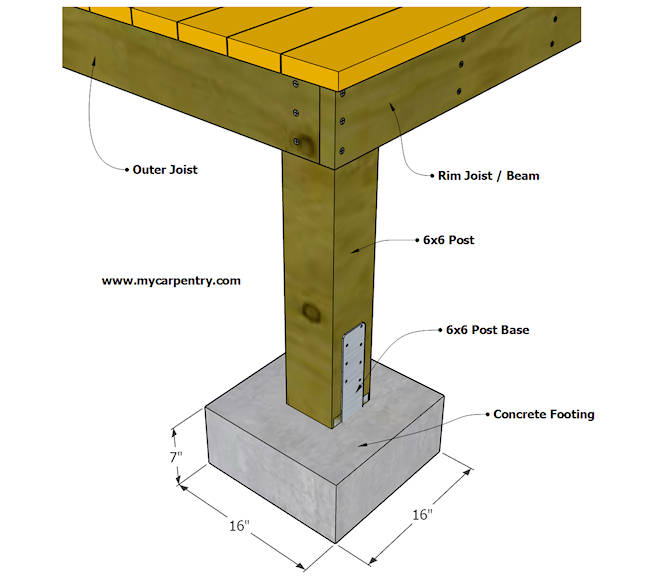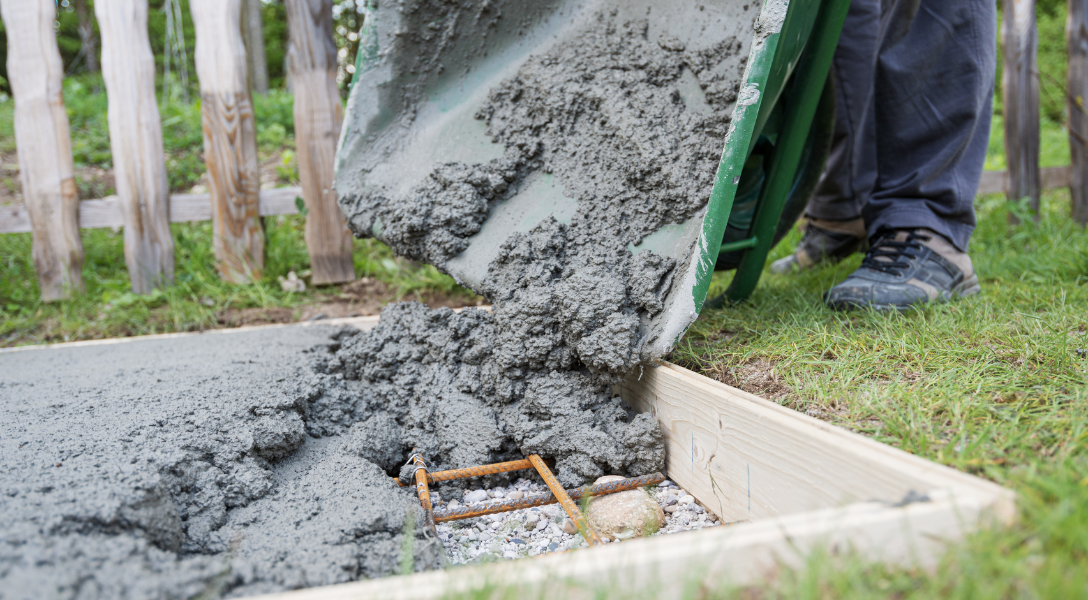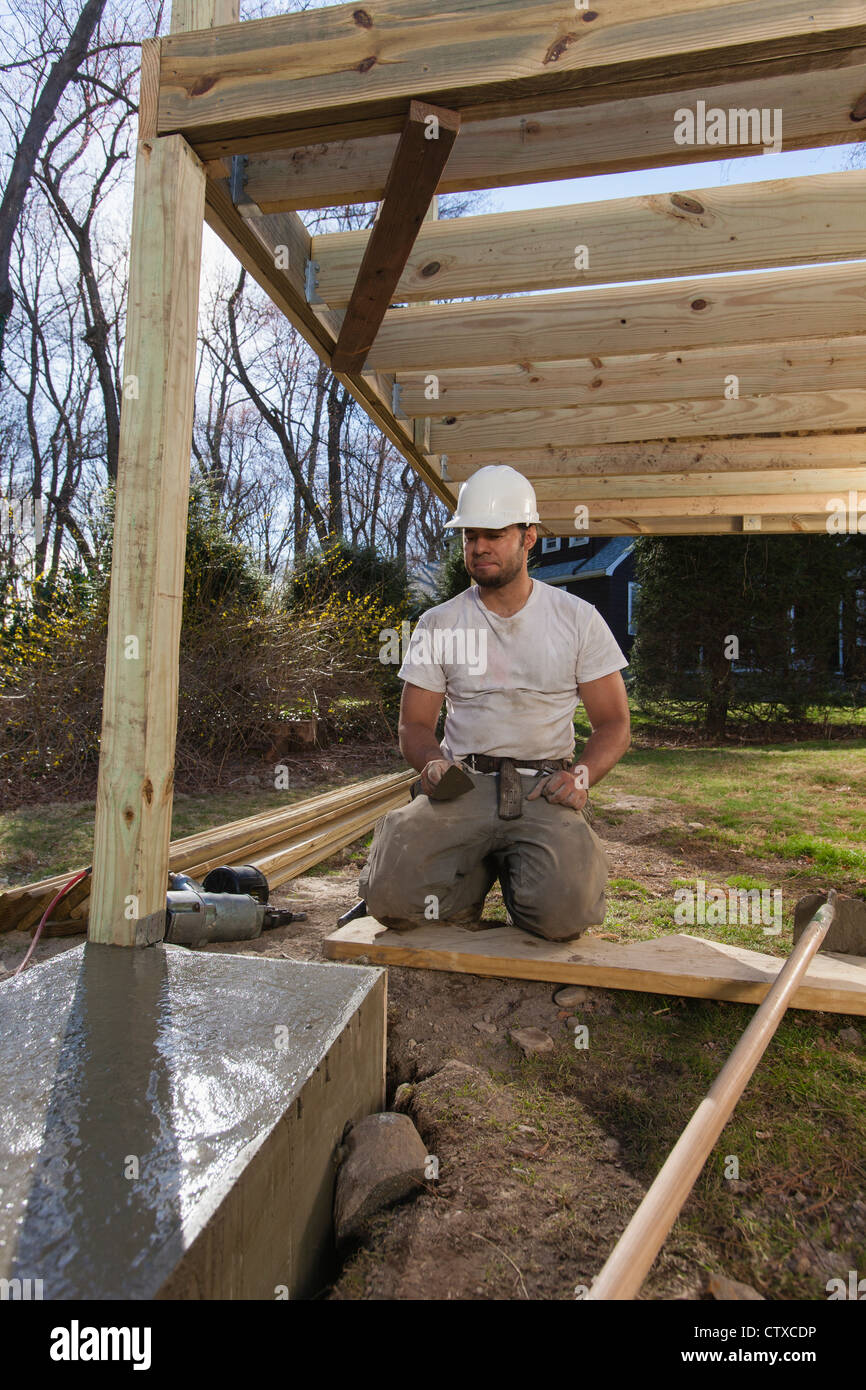Deck Footings Demystified: Your Plan for a Safe, Lasting Outdoor Place
Wiki Article
Make Sure Stability and Long Life With Effectively Installed Deck Grounds
Deck footings might not be the most glamorous element of deck building, but they play an essential duty in ensuring stability and long life. Correctly installed footings give a solid foundation for your deck, stopping typical concerns like sagging, shifting, and even collapse. Nevertheless, selecting the appropriate sort of footing and properly installing it can be an intricate process. In this conversation, we will certainly discover the value of correct deck footings, factors to think about throughout installment, different sorts of grounds offered, step-by-step installation guide, and maintenance tips for guaranteeing lasting grounds. If you desire to make sure the stability and longevity of your deck, maintain reviewing to uncover the vital understandings to achieve a structurally audio and durable outside area.
Significance of Correct Deck Grounds
Why are properly installed deck footings critical for the security and longevity of your deck? Deck grounds are the foundation on which the deck relaxes, transferring the tons from the deck to the ground.Firstly, effectively set up deck grounds distribute the weight of the deck equally, protecting against any type of irregular settling or sinking. This is especially essential in locations with unpredictable soil, as it helps to reduce the risk of the deck collapsing or changing. Additionally, well-installed footings make certain that the deck continues to be level, stopping any structural damages that can occur when a deck comes to be irregular.
Second of all, effectively installed footings provide a strong anchor for the deck, preventing extreme movement and persuade. This aids to maintain the structural honesty of the deck, decreasing the danger of mishaps or injuries. It additionally lessens the wear and tear on the deck, permitting it to hold up against the elements and regular usage for a longer amount of time.
Variables to Consider for Deck Ground Setup
When setting up deck grounds, there are numerous vital elements to consider for appropriate installment. Different soil kinds have various load-bearing capacities, so it is important to perform a soil examination to guarantee the grounds can sustain the weight of the deck and its passengers. By taking into account these factors, you can guarantee the appropriate installment of deck grounds and appreciate a durable and steady deck.Kinds of Deck Footings to Pick From
There are numerous different sorts of deck grounds available for you to pick from. Each kind has its very own benefits and disadvantages, so it's vital to consider your specific requirements and the conditions of your deck before making a choice.One usual kind of deck ground is the concrete ground. This entails digging openings in the ground and putting concrete right into them to develop a solid foundation. Concrete footings are resilient and provide outstanding stability, making them appropriate for decks in areas with challenging soil conditions or high wind loads.
One more alternative is the helical pier ground, which is composed of a steel shaft with helical plates that are screwed right into the ground. These footings fast to mount and can be utilized in various soil types, including sandy or clay soils. They are additionally flexible, permitting easy progressing of the deck.
Sonotube footings are one more prominent selection. These footings are produced by putting a cardboard tube in an opening and loading it with concrete. Sonotube footings are relatively simple to install and supply ample security for smaller sized decks or in areas with less requiring soil problems.

When picking the sort of deck ground, it's important to consider variables such as soil problems, deck dimension and weight, local building regulations, and personal preferences. By choosing the suitable footing kind, you can make certain the security and durability of your deck.
Step-by-Step Overview for Setting Up Deck Footings

Determine the area: Start by noting the exact position of each footing utilizing risks and string (Deck Footings). Think about any kind of regional building ordinance or laws pertaining to setback distances
Dig the openings: Utilize an article opening miner or an auger to dig the holes for the grounds. Usually, a depth of at least 36 inches is advised for stability.
Degree the holes: Ensure that the bases of official website the openings are degree (Deck Footings). This can be achieved by utilizing a level or a straight board across the top of the holes
Add gravel: Place a layer of crushed rock at the end of each hole to boost drainage and stop the ground from penetrating the dirt with time.
Insert the ground types: Insert the footing creates right into the holes, guaranteeing they are focused and level. Use risks to secure them in place.
Mix and pour concrete: Comply with the directions on the concrete mix bag to prepare the concrete. Pour the concrete into the footing types, filling them totally.
Smooth the surface area: Use a trowel to smooth the surface of the concrete and remove any kind of air pockets. Permit the concrete to heal according to the manufacturer's directions.
Upkeep Tips for Long-lasting Deck Grounds
Correct upkeep is important for ensuring the durability and stability of deck grounds. By on a regular basis checking and keeping your deck footings, you can avoid damages and potential security risks. One vital aspect of upkeep is to routinely inspect for any kind of indicators of wear and tear, such as fractures or activity in the footings. If you notice any kind of problems, it is very important to resolve them immediately to avoid further damage.Routine cleaning is likewise important for maintaining deck grounds. Particles, dust, and plants can collect around the footings, which can bring about moisture accumulation and degeneration. Cleaning up the footings routinely, using a brush or a stress washer, can aid prevent these problems and extend the life expectancy of your deck.
Along with cleaning, it is necessary to keep the location around the grounds free from any type of blockages. Avoid stacking things versus the footings or permitting plants to grow also near to them. These obstructions can trap dampness and create the footings to degrade gradually.
Finally, normal resealing of the footings is advised to shield them from dampness and find here other environmental variables. Applying a water-proof sealer can help stop water damage and extend the life expectancy of the grounds.
Conclusion
To conclude, correct installment of deck grounds is important for making sure stability and durability of your deck. Elements Recommended Site such as soil type, lots capacity, and local building ordinance require to be taken into consideration when choosing the best sort of deck footings. Adhering to a detailed guide for installation and routine upkeep will aid to make sure the grounds remain resilient and resilient.In this discussion, we will certainly check out the value of appropriate deck footings, elements to think about during setup, various types of grounds available, detailed installment overview, and maintenance ideas for making sure durable grounds. Deck grounds are the foundation on which the deck rests, moving the load from the deck to the ground.One common kind of deck ground is the concrete ground. Insert the footing types: Place the footing forms into the holes, guaranteeing they are focused and degree.In verdict, correct installment of deck grounds is vital for ensuring stability and long life of your deck.
Report this wiki page